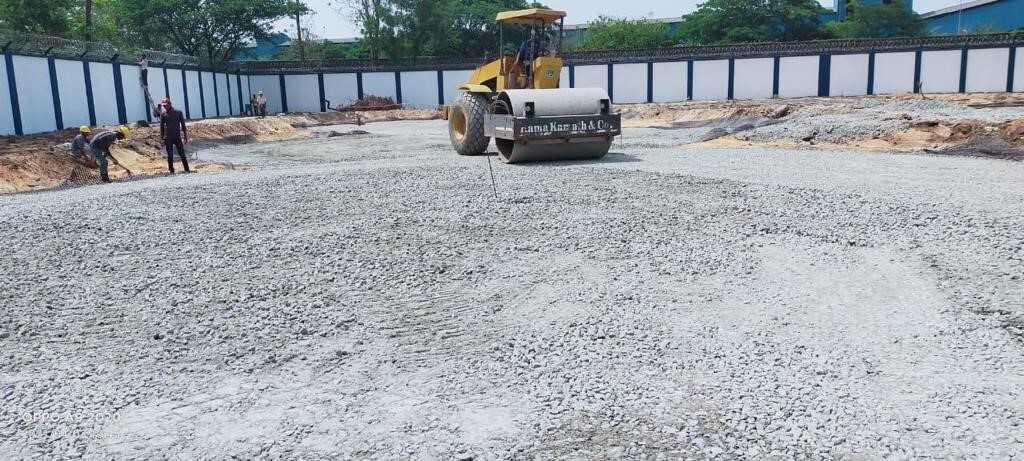Bitumen
What is bitumen?
A successful and long-lasting structure comprises several good engineering choices of construction materials. One of the most important materials is bitumen. Bitumen is naturally available and extracted from crude oil. For over 4,000 years, it has been an integral part of the construction industry. Earlier, bitumen insulated houses, boats, castles, and other structures. Over time, the utilization of bitumen extended to creating roads, bridges, and other structures. The texture of bitumen is sticky and has high viscosity. It is found in both liquid and semi-liquid form. This blackish-brown component is a mixture of petroleum by-products and asphaltene resin. Let’s explore what Bitumen is, how it serves the construction industry, and its properties, types, advantages, and disadvantages.
What are the properties of bitumen?
Properties of bitumen may vary depending upon its availability, extraction process, types, and ingredients used for extracting. Some of the lesser-known properties of bitumen are:
- Bitumen, a hydrocarbon, is extracted from the fractional distillation process.
- It is a temperature-sensitive petroleum by-product.
- It has a natural quality that resists water or moisture.
- It is easily soluble in carbon disulfide (CS₂) and carbon tetrachloride (CCl4)
Some other essential properties of bitumen include:
- Viscidity: Bitumen has a very high viscidity. This means that it remains in semi-solid form at room temperature. Once heated, it becomes liquid, making it suitable as a binder and water-proofing agent.
- Strong binding agent: Bitumen is a strong binding agent because of its dense viscidity. Once it hardens, it becomes smooth and sticks to the surface, leaving no small openings.
- Longevity: Bitumen is not only water-resistant, but it also provides resistance to weather and other factors that can cause degradation of the structure.
What are the different types of bitumen?
Bitumen is mainly available in three different forms. Some forms are obtained naturally, and some are obtained by refining and mixing.
- Natural bitumen: As the name suggests, natural bitumen is a type of bitumen found naturally. It is formed due to climatic conditions and can be used without refining or processing. Natural bitumen is also called native asphalt.
- Coal tar pitches: The coal tar pitches are formed by coal tar distillation. Coal tar’s texture is hard, coarse, and black in colour. When heated, coal tar loses its viscosity and becomes liquid.
- Petroleum asphalt: The petroleum asphalt is derived from refining crude oil. It is directly produced by the distillation process and can be in solid and semi-solid forms. Compared to other types, petroleum asphalt is a commonly used bitumen.
What are the applications of bitumen?
Bitumen has various applications in the field of civil engineering. Here are some applications listed below:
- It is a natural binder that can bind any construction material with the surface on which it is applied. Hence, engineers use bitumen to construct roads, runways or racing tracks.
- It is an excellent water-resistant component. Therefore, it is also widely used for roofing.
- Engineers often use bitumen for waterproofing because of its high viscidity.
- It is also an essential material in huge industries. It is used for waterproofing, providing a protective coating to pipes, and adhering two surfaces together.

Methods of extracting bitumen
Natural bitumen Extraction
- Open-Pit Mining: Natural bitumen can be extracted through open-pit mining. In this method of extraction, large machines are used to remove the upper layer of soil and the rocks. Once the layer is removed, the bitumen can be scooped using excavators.
- Underground Mining: Underground mining is another method of extracting natural bitumen. It includes shaft mining or in-situ leaching. Shaft mining involves making a vertical shaft go underground and scooping up the bitumen without removing or destroying any layers of soil or rocks. On the other hand, in-situ leaching is a long process. Hot water and other solvents are pumped underground to mix with the bitumen. The solution is then pumped out, which is then processed and separated.
Petroleum bitumen Extraction
- Vacuum Distillation: The crude oil is refined at high pressure and temperatures. Once this distillation process is done, bitumen is obtained.
- Further Processing: Bitumen extracted from vacuum distillation cannot be used directly. It involves other processes, including refining, processing, and mixing cleaning solvents.
Advantages of bitumen
Here are some advantages of bitumen
- Bitumen has diverse properties. It can be utilised in different ways depending upon its application.
- It is durable and provides resistance against weather and other degrading factors.
- Due to its high viscidity, bitumen is an excellent adhesive. Engineers often use it to bond two surfaces.
- Bitumen is not only an excellent construction material but also cost-effective.
Disadvantages of bitumen
With some advantages, bitumen also has some disadvantages:
- Bitumen can have an adverse environmental impact. It is extracted through mining or crude oil and then refined for use, which pollutes the air and water.
- At present, we have ample bitumen available. However, it is not a sustainable resource. It is a non-renewable material.
- Another disadvantage of bitumen is that it is frangible at low temperatures. It loses its adhesive property and breaks easily.
- While refining bitumen, it releases harmful fumes and particles that can be hazardous to health.
